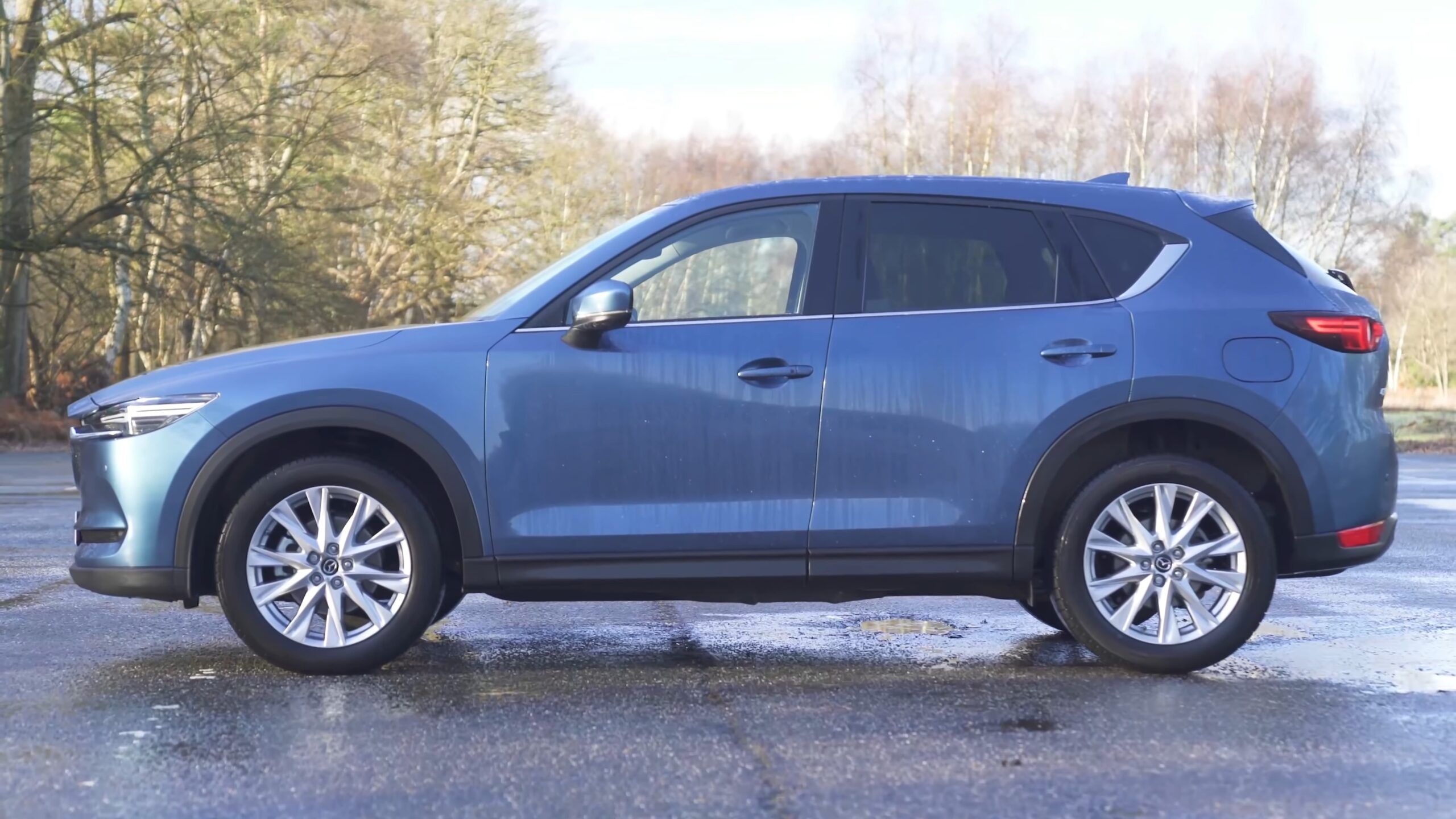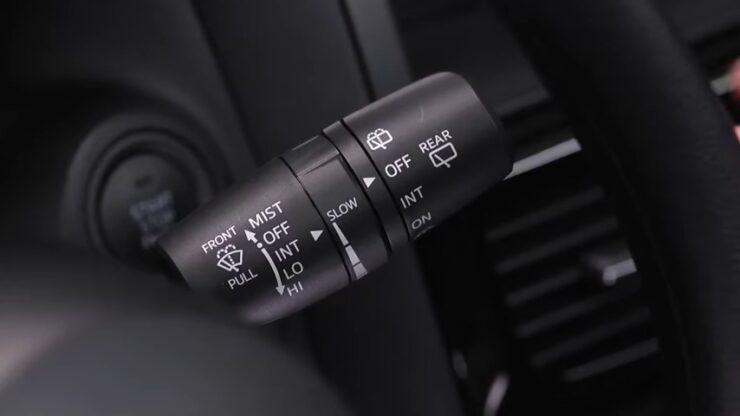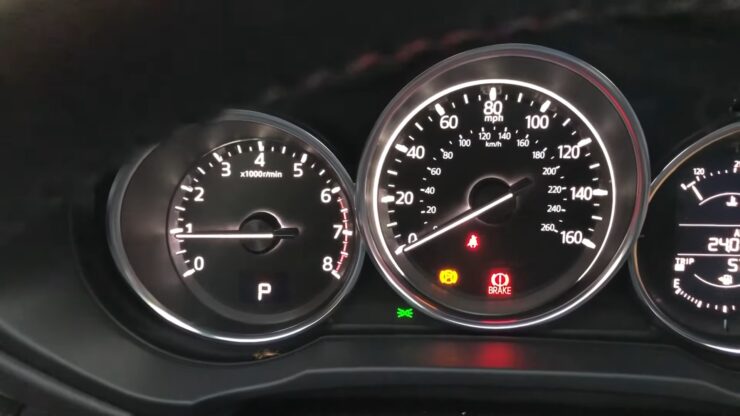I remember when the CX-5 first hit the roads in 2013 as a compact crossover SUV.
It felt like a touch of luxury without the hefty price tag, and I wasn’t the only one who thought so.
Over the years, many auto enthusiasts, including myself, have sung its praises.
However, as with any car I’ve driven, perfection is elusive.
In this piece, I’ll share my personal experiences and delve into some of the common challenges CX-5 owners, like myself, have encountered.
Before you start reading this article, are you aware that the new Mazda CX-70 is on its way?
1. Infotainment System
I remember the first time I experienced it in my CX-5. I was driving home, and suddenly, my infotainment system had a mind of its own. I later found out from Car Problem Zoo, a platform where car owners share their experiences, that this was a common issue and had been aptly named the “ghost touch.”
Imagine this: you’re driving, and out of nowhere, your infotainment system starts behaving erratically, as if some invisible entity is having fun at your expense. It would randomly:
- Switch radio stations
- Exit from the navigation mode
- Press random buttons on its own
- Swap between different functions
- Emit unexpected beeping sounds
- Dial phone numbers without prompt
- Shift the display mode from day to night
- And the most annoying of all, continuously reboots and freezes.
While it might not pose a direct threat to safety, the sheer unpredictability and distraction can be maddening. I’ve heard from fellow CX-5 owners that this “ghost” has haunted models from 2017 to 2021.
What Can Be Done?
I was taken aback when I realized that a new display could set me back by over $1,200. And to add to the frustration, despite the widespread nature of this issue, Mazda hasn’t issued a recall for the CX-5’s “ghost touch” problem. Many, including myself, found that Mazda wouldn’t address the issue if the car was out of warranty.
However, there’s a silver lining. Some resourceful owners have found a workaround by disabling the touchscreen altogether, which effectively exorcises the “ghost.” Here’s how I did it:
- I started by removing the dashboard using a trim removal kit, granting full access to the display.
- Using a 10mm socket, I took out the bolts located on both sides of the display.
- After safely keeping the bolts and screws aside, I unclipped the wires connected to the back of the unit, allowing it to come off.
- The key was to locate a small yellow ribbon connected to the unit. In my case, I had to slightly cut a part of the unit to access it.
- Once located, I cut the ribbon and reassembled the unit in the reverse order.
While it might sound a bit technical, with a bit of patience, it’s a doable DIY solution. And trust me, the peace of mind after is worth the effort!
2. Improper Shutdown Issue
Many Mazda CX-5 owners, especially of the 2013 and 2014 models, have reported a problem where the car doesn’t shut down correctly. While the engine stops, the accessory power (linked to the battery) remains active. This malfunction is attributed to the electrical/ignition system not deactivating the battery when the car is turned off.
A clear sign of this problem is when the dashboard and clock continue to be illuminated.
The aftermath of this malfunction is a drained battery, which can result in the car failing to start, leaving the owners in a bind.
Here’s a testimony from an owner:
“After a family dinner in NYC, we parked in an open valet area. Upon our return, we found the battery had run out. Even though our car was one of the last in the lot, I had jumper cables, and with the help of the parking attendant and another vehicle, we managed to jump-start it.”
Resolution:
The root of this problem lies in a defective sensor in the transmission. By taking the CX-5 to an official dealership, they can replace this sensor, costing around $250.
To replicate the problem, where the engine stops but the battery stays active:
- Set the car to park.
- Press the power button. A potential temporary fix is to restart the car, shift through various gears, and then attempt to turn it off. After a few tries, the battery might deactivate.
Some owners also recommend driving the car for a short distance and then trying to shut it down again.
3. Sunroof Shattering Issue
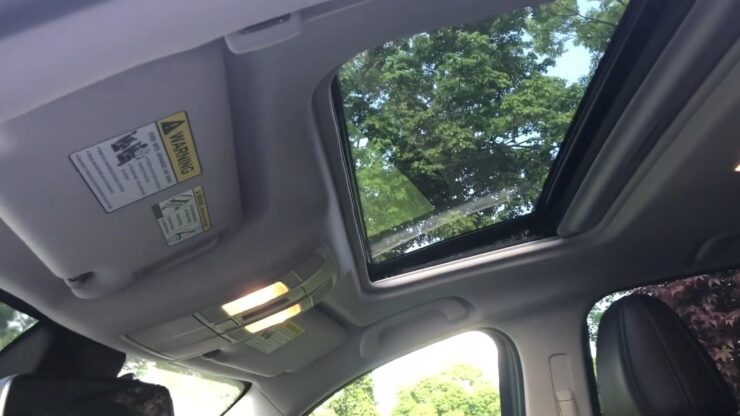
Many drivers were caught off guard by this, describing the sound as akin to a gunshot. Some even sustained facial scratches due to the sudden shattering.
An owner shared this harrowing incident:
“While on the highway with my spouse, our sunroof glass just burst out of nowhere. We were met with a deafening bang, followed by the rush of wind and our sunroof cover being pushed open. Pulling over, we discovered our sunroof in fragments.”
This alarming issue has been noted in CX-5 models spanning from 2016 to 2022, with a higher frequency during warm, sunny days.
Resolution:
Given that these incidents predominantly occur on hot days, it’s believed that a design flaw, not accounting for heat expansion, might be the culprit.
To address this, the manufacturer should consider revising the design to accommodate heat-induced expansions.
While there’s no legal obligation to replace a shattered sunroof, it’s advisable for safety reasons. If the dealership doesn’t cover the replacement under warranty, reaching out to your insurance is recommended.
It’s worth noting that some Mazda owners have mentioned that the company covered their insurance deductibles in such cases.
4. Issue with Daytime Running Lights
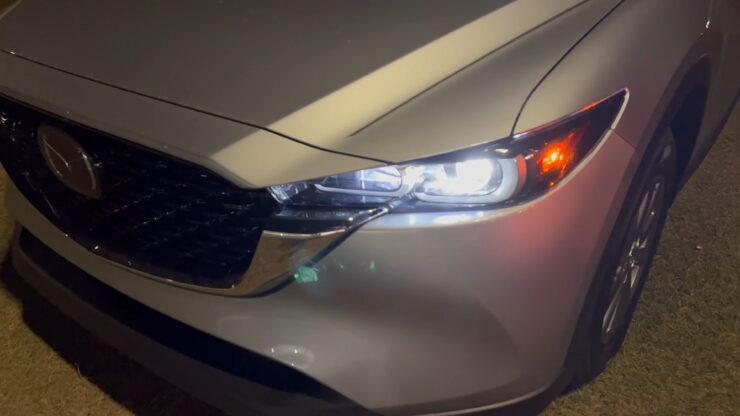
DRLs play a crucial role in enhancing vehicle visibility during daylight hours, promoting road safety by ensuring other drivers can easily spot the car.
The malfunction of these lights poses a risk to pedestrians and fellow drivers.
Resolution:
Given the safety implications of this malfunction, Mazda initiated a recall for over 36,761 CX-5 units that had defective DRLs. Since this is a recall situation, dealerships should address the problem without any charges to the vehicle owner.
For those who’ve already borne the repair expenses out of pocket, it’s recommended to reach out to Mazda for a reimbursement.
The root cause of this issue lies in the incorrect specifications of a sealing gasket for a wiring connector. This flaw makes the controlling circuit susceptible to corrosion, preventing the light from getting power.
The remedy involves replacing the faulty sealing gasket. However, in certain cases, a complete headlight replacement might be necessary.
5. Issues with Windshield Defrosting
A few CX-5 SUV owners have raised concerns regarding the inefficiency of the windshield defrost system. Specifically, the defrost seems to be effective only in the central portion of the windshield, leading to compromised visibility in colder climates.
Though the number of complaints is relatively small (pertaining to models from 2016 to 2021), it’s a significant concern for those residing in areas with harsh winter conditions. Potential buyers in such regions should be aware of this issue before making a purchase.
One frustrated driver shared:
“On days with rain or snow, especially during nighttime, visibility becomes a major concern. The central view is clear, but the fog accumulation on the sides of the windshield restricts peripheral vision.”
Resolution:
Based on feedback from those who approached Mazda regarding this problem, it appears there’s limited recourse. The design of the vehicle seems to be the primary factor.
An owner recounted their experience:
“After taking the car to the dealership for a warranty check, the technicians evaluated the defroster and wipers. They confirmed that everything was functioning as intended and there wasn’t much they could do to rectify the situation.”
Given the circumstances, our recommendation for those facing this issue is to always keep an ice scraper handy in the vehicle. This can assist in clearing the windshield if the defrost system proves inadequate.
6. Issue with Windshield Fragility
Driving with a compromised windshield is not only distracting but can also be illegal in certain states, necessitating immediate repairs.
This particular issue seems to be more prevalent in the 2014 to 2017 models.
Resolution:
The immediate remedy for a cracked windshield is replacement.
Owners are encouraged to advocate for warranty coverage for this issue. If initial discussions with dealership representatives are unfruitful, escalating the matter to higher management might yield better results.
If warranty coverage is denied, the next best option would be to claim the replacement through insurance.
7. Brake System Malfunctions
Several Mazda CX-5 drivers have reported issues related to the brake system. These concerns primarily revolve around the brakes feeling spongy or unresponsive, especially during wet conditions. This poses a significant safety risk, as efficient braking is crucial to prevent accidents.
Some drivers have noted that the brake pedal goes all the way down without providing the expected stopping power. This alarming situation has led to close calls for many, with drivers having to rely on the handbrake in emergencies.
This brake system issue seems to be more common in the 2015 to 2018 models.
Resolution:
The immediate course of action for any brake-related problem is to have the vehicle inspected by a professional.
Owners should approach the dealership and insist on a thorough check under warranty, given the safety implications. If initial interactions with the service staff are unsatisfactory, it might be beneficial to escalate the matter to higher authorities within the dealership or Mazda’s customer service.
If the problem persists and isn’t addressed under warranty, it’s advisable to consult with a trusted mechanic and potentially consider a complete brake system overhaul. Safety should always be the top priority.
Mazda CX-5 Model Years with the Most Reported Issues
| Mazda CX-5Model Year | Problems | Sales | VehicleAge | PPMY Index |
| 2022 | 2 | – | – | – |
| 2021 | 33 | 190,392 | 1 | 0.17 |
| 2020 | 37 | 128,558 | 2 | 0.14 |
| 2019 | 83 | 156,443 | 3 | 0.18 |
| 2018 | 158 | 142,430 | 4 | 0.28 |
| 2017 | 98 | 97,789 | 5 | 0.20 |
| 2016 | 478 | 241,320 | 6 | 0.33 |
| 2015 | 141 | 94,247 | 7 | 0.21 |
| 2014 | 443 | 97,168 | 8 | 0.57 |
| 2013 | 273 | 53,732 | 9 | 0.56 |
To accurately determine which Mazda CX-5 model years experience the most issues, it’s essential to compare models based on the ratio of reported problems to the number of vehicles sold.
We’re referencing the Car Complaints PPMY metric, which stands for problems reported per thousand vehicles per year. This approach ensures that newer models, which might have fewer complaints due to their shorter time on the road, are fairly assessed.
According to this metric, the model years with the highest reported problems are:
- 2014 – 0.57 PPMY
- 2013 – 0.56 PPMY
- 2016 – 0.33 PPMY
Conversely, the model years with the fewest reported problems include:
- 2020 – 0.14 PPMY
- 2021 – 0.17 PPMY
- 2019 – 0.18 PPMY
FAQ
How has Mazda responded to the “ghost touch” problem in the infotainment system?
While many owners have reported the “ghost touch” issue, Mazda hasn’t issued a recall for this specific problem. Some owners have found that Mazda wouldn’t address the issue if the car was out of warranty.
Are there any preventive measures to avoid the sunroof shattering issue in the Mazda CX-5?
The primary cause of the sunroof shattering seems to be related to a design flaw not accounting for heat expansion. While there isn’t a direct preventive measure mentioned, it might be beneficial to avoid parking the car under direct sunlight for extended periods, especially during hot days.
How does the PPMY index help in understanding the reliability of a car model?
The PPMY (problems reported per thousand vehicles per year) index provides a fair assessment of a car model’s reliability by considering the number of reported problems in relation to the number of vehicles sold and the vehicle’s age. This ensures that newer models, which might naturally have fewer complaints due to their shorter time on the road, are assessed fairly against older models.
Final words
The Mazda CX-5, since its introduction in 2013, has been a favorite among compact crossover SUV enthusiasts. Its blend of luxury and affordability has garnered a significant fanbase. However, like any vehicle, it’s not without its quirks and challenges.
Being informed about these potential issues and their solutions can greatly enhance the ownership experience. Regular maintenance, staying updated with recalls, and being proactive in addressing minor issues before they escalate are key to enjoying a smooth ride. Remember, every car has its unique personality, and understanding it is part of the journey.

